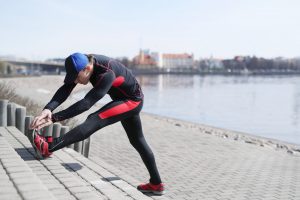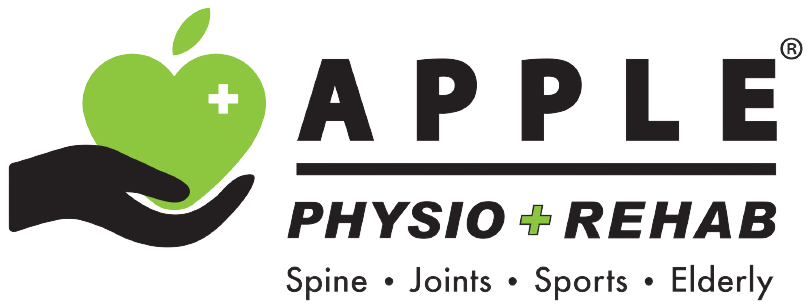“No pain, no gain.“
You’ve probably heard the phrase tossed around in fitness circles, but how does this apply to training for triathlons? Is all pain a sign of progress, or could it be a red flag?
Because triathlons are no walk in the park. Preparing for such an intensive sport requires discipline and resilience. Of course, this naturally brings some level of discomfort. Your muscles will burn, your lungs will ache, and your body will protest as you push it further than before.
However, it’s important to keep in mind that not all pain is beneficial. An avoidable injury could put a serious dent into weeks or months of prep work for a race—all because you wanted to squeeze a little more out of your workout.
Beyond physical endurance, triathletes need mental toughness and a strategic approach to training. That’s why understanding the difference between productive pain and harmful pain is crucial if you’re aiming to give your best while staying injury-free.
Not All Pain Are The Same – Productive Pain vs. Harmful Pain

Imagine your body as a high-performance machine. Like any engine, it requires stress to enhance its capabilities. However, excessive stress can lead to a breakdown. So when you train for a triathlon, you need to make clear the distinction between productive and harmful pain. One aids growth, while the other stunts progress.
Productive Pain: When Discomfort Equals Progress
Productive pain is the familiar soreness that follows a good workout session. It’s the kind that helps you grow stronger, faster, and tougher. This type of pain usually comes from challenging your muscles and cardiovascular system in a controlled manner.
- Delayed Onset Muscle Soreness (DOMS)
One of the most common forms of productive pain is Delayed Onset Muscle Soreness (DOMS). If you’ve ever felt stiff and sore a day or two after a fierce workout, you’ve experienced DOMS. This soreness is a natural response to the microscopic muscle tears that occur during exercise, especially when you push your muscles harder than they’re used to. The condition typically peaks 24 to 48 hours (1 to 2 days) after your workout. It’s a positive indicator that your body is adapting and getting stronger.
- Mild Discomfort During High-Intensity Workouts
Another example of productive pain is the mild discomfort you feel during high-intensity workouts. This might manifest as a burning sensation in your muscles as lactic acid builds up, or the breathlessness and increased heart rate that accompanies a hard interval session. This shows that your body is working hard to meet the demands you’re placing on it. Pushing through can lead to improved endurance and strength over time.
Harmful Pain: When Pain Means Stop
As mentioned, it’s crucial that you differentiate productive pain from harmful pain. While some pain here and there is a natural part of overcoming your limits, it can be dangerous and counterproductive if not managed correctly. It’s often a consequence of overuse, improper technique, or ignoring your body’s alerts to rest.
- Sharp or Stabbing Pain
Sharp, stabbing pain is a major red flag. Unlike the dull ache of DOMS, it can lead to injuries such as a muscle tear or ligament strain. For example, a sudden piercing pain in your Achilles tendon during a run could be a sign of tendinitis or even a partial tear. Ignoring it and continuing to train can snowball into more severe injuries that may sideline you for weeks or even months!
- Persistent Pain
Persistent pain that doesn’t go away after a few days of rest is another warning sign. This could mean an overuse injury like shin splints, plantar fasciitis, or a stress fracture. For instance, if you feel a consistent ache in your shins every time you run, it’s important to look for a rehabilitation centre in Malaysia like Apple Physio Rehab to assess the issue. Early intervention can prevent a minor injury from turning into a major setback.
- Swelling and Bruising
Swelling and bruising are clear indications of an injury that you must not ignore. These symptoms often accompany sprains, strains, or fractures and should be treated promptly and with care. If you notice swelling after a workout, it’s wise to call a time-out, pause, and assess the situation. Apply the RICE method (Rest, Ice, Compression, Elevation) to aid recovery while you seek professional advice.
Recognising the difference between these two types of pain is vital for effective training and injury prevention. The last thing you want is to make a dumb mistake that puts you out of commission and stalls progress as you bite your lips and wait for your body to heal.
Plus Ultra – When Should You Push Through Pain?

There are instances when exerting yourself past pain is necessary.
Pushing through mild, productive pain can be beneficial, especially when building strength and endurance. Controlled intensity, like performing hill repeats on your bike or increasing the resistance in your swim training can help boost your performance. As long as the pain is manageable and subsides with rest, it’s a good sign that your body is adjusting and developing.
Mental toughness is equally important as conquering physical challenges in triathlon training. Sometimes, the pain you feel is more mental than physical: Am I just exhausted or am I hurting for real? Learning to overcome these mental barriers can help you build resilience and confidence. However, it’s crucial to recognise the contrast between mental fatigue and genuine physical limitations. If the pain feels sharp, localised, or unusual, it’s best to stop and evaluate.
Red Light – How to Know When to Stop During Training?

The golden rule is: if something doesn’t feel right, stop.
Knowing when to stop is just as critical as knowing when to push through. So you must be able to identify unwanted pain as you train.
- Sharp, stabbing pain is never acceptable.
- Persistent pain that doesn’t improve with rest is also a big no-no.
- Overtraining is another common culprit of which many are guilty. Symptoms include chronic fatigue, decreased performance, mood swings, insomnia, and frequent illnesses.
If you notice these symptoms, it’s time to take a step back and allow your body to recuperate. Continuing further is ill-advised unless you’re purposely trying to break your body apart. In the event that pain persists despite rest and recovery efforts, consulting a healthcare professional or specialist in sports physiotherapy in Malaysia is highly recommended.
Practical Tips for Triathletes – Let’s Do This!
Now then, let’s look at some useful tips that can help your triathlon training:
- Listen to Your Body: Your body is always communicating with you—listen to it. You’re literally your most reliable training partner. Pay close attention to how you feel before, during, and after workouts. Using a pain scale can help you assess whether it’s safe to continue or if it’s time to take a break.
- Prioritise Rest as Much as Maximising Gains: Rest is a necessity, not a luxury. Schedule rest days into your routine to ensure you’re getting an adequate amount of sleep. While you’re “inactive”, your muscles are actively repairing and rebuilding themselves. So give them the time they need.
- Incorporate Recovery Techniques: For physical soreness, try recovery techniques such as foam rolling, stretching, or cold water immersion to help alleviate muscle tension and keep you healthy. For mental wellness, try practising mindfulness techniques like meditation or yoga to help manage stress and improve mental fortitude.
- Use Proper Form and Gear: Poor form and equipment can lead to unnecessary strain and injury. Mastering proper techniques is essential for getting the best out of your training. Consider working with a coach to refine your swimming, cycling, and running form. Likewise, investing in a good pair of shoes, a well-fitted bike, and proper swimwear can bring your game to the next level.
- Strength and Cross-Training: Building your core and overall strength improves stability, reduces injury risk, and enhances performance. On the other hand, mixing in low-impact activities like swimming or cycling can aid the healing process and prevent overuse injuries.
- Nutrition and Hydration: Your body needs fuel to function. Eating right and always staying hydrated will do wonders in keeping your energy levels up and promoting post-workout recovery.
You may have realised that these tips go hand-in-hand with what you’ve learned earlier about identifying and managing productive and harmful pain. You’re right! Everything ties in together nicely to give you a strong foundation. You can always up the intensity or go harder when you’re ready, but the core basics are what will keep you going in the long run.
Onward to a Better and Stronger You With Apple Physio Rehab

Triathlon training can be challenging, but it’s also incredibly rewarding.
You’re not trying to endure as much pain as possible, but managing it intelligently instead. So it’s as much about strategy as it is about perseverance. That’s why learning to differentiate between productive and harmful pain is key to avoiding injury and achieving your goals.
By adopting a holistic approach to training that includes strength, endurance, flexibility, and recovery, you can prepare both your mind and body for the demands of a triathlon. Remember, listening to your body isn’t a sign of weakness—it’s the smartest way to stay strong and fit.
If you’re serious about training for any sport, consider partnering with experts who understand the demands of the sport. At Apple Physio Rehab , we offer comprehensive physiotherapy services in Malaysia tailored to your needs.
Reach out to us today to learn more about how we can support your training journey. Fight on!




